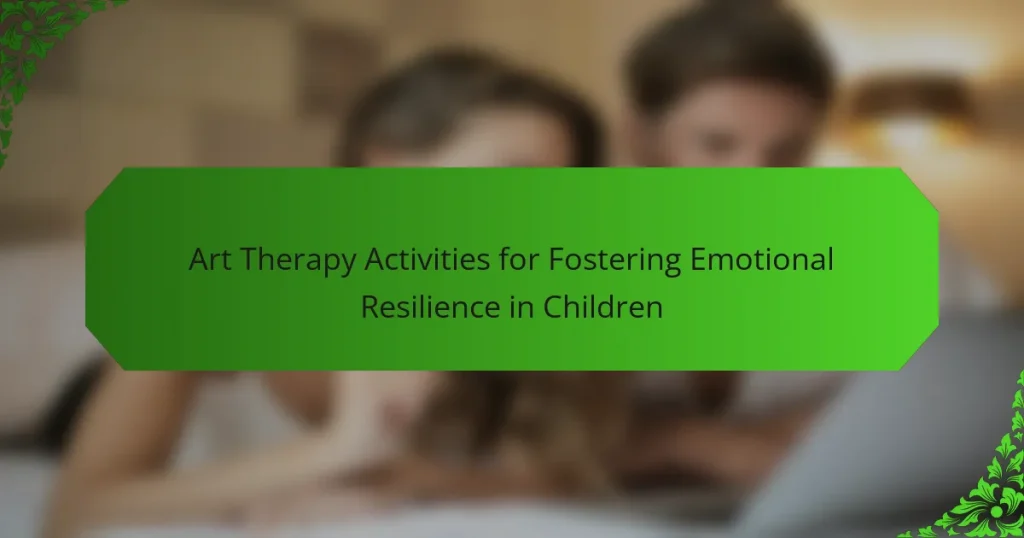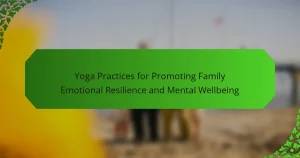Art therapy activities play a crucial role in fostering emotional resilience in children. These activities promote self-expression, enhance emotional awareness, and develop problem-solving skills. Techniques such as drawing, painting, and sculpting provide safe outlets for emotions. Incorporating cultural relevance and personalized themes further enriches the therapeutic experience, making it accessible and engaging across various settings.
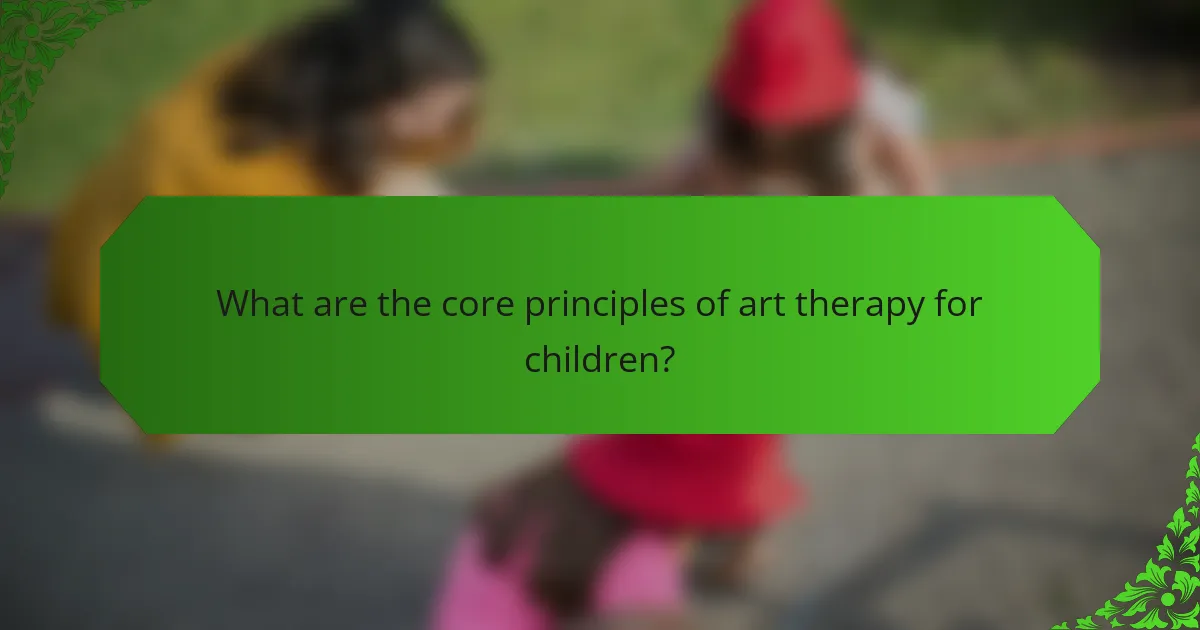
What are the core principles of art therapy for children?
Art therapy for children centers on creative expression to enhance emotional resilience. Core principles include fostering self-expression, promoting emotional awareness, and encouraging problem-solving skills. Activities like drawing, painting, and sculpting allow children to communicate feelings non-verbally, helping them process emotions. This approach nurtures a safe environment, enabling children to explore their thoughts and feelings, ultimately building resilience and coping strategies.
How does art therapy enhance emotional resilience?
Art therapy enhances emotional resilience in children by providing creative outlets for self-expression. Engaging in art activities helps children process emotions, reduce anxiety, and build coping skills. For example, drawing or painting allows them to visualize feelings, which can lead to improved emotional understanding. Research indicates that children who participate in art therapy exhibit greater emotional regulation and resilience compared to those who do not engage in such activities.
What psychological theories support art therapy?
Art therapy is supported by several psychological theories, including humanistic, cognitive-behavioral, and psychodynamic approaches. Humanistic theories emphasize personal growth and self-actualization, making art a medium for children to express emotions. Cognitive-behavioral theories focus on altering negative thought patterns through creative expression, enhancing emotional resilience. Psychodynamic theories explore unconscious processes, allowing children to communicate feelings indirectly through art. These frameworks collectively highlight art therapy’s effectiveness in fostering emotional resilience in children.
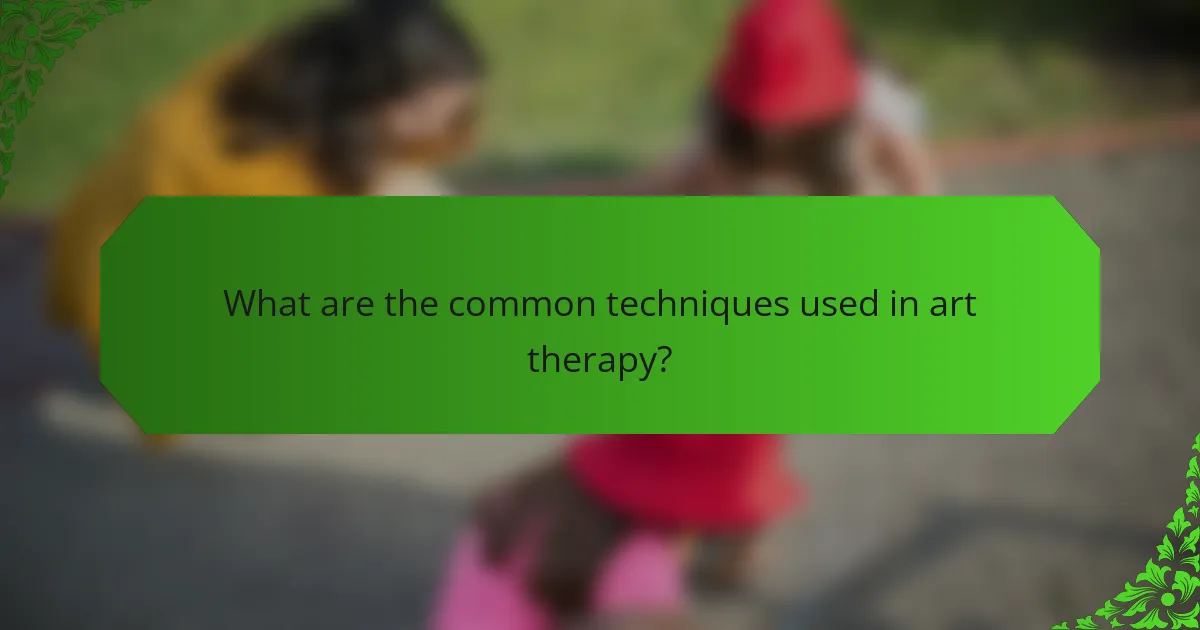
What are the common techniques used in art therapy?
Art therapy commonly employs techniques such as drawing, painting, and sculpting to enhance emotional resilience in children. These activities allow children to express feelings non-verbally, fostering creativity and providing a safe outlet for emotions. Group art projects can promote social skills and collaboration, while individual sessions often focus on personal expression and reflection. Techniques like guided imagery and art journaling encourage deeper emotional exploration. Each method uniquely contributes to building resilience and coping strategies.
How can drawing facilitate emotional expression?
Drawing facilitates emotional expression by providing children a safe outlet to convey feelings. It allows them to visualize emotions that may be difficult to articulate verbally. Engaging in art therapy activities enhances emotional resilience by promoting self-awareness and coping strategies. For instance, children can illustrate their experiences, helping them process complex feelings and build confidence. This unique attribute of drawing as a therapeutic tool supports emotional development in a creative and engaging manner.
What role does painting play in self-discovery?
Painting plays a significant role in self-discovery by allowing children to express emotions and explore identity. Through art therapy, children can process experiences, enhance emotional resilience, and develop coping strategies. Engaging in painting activities fosters creativity, encourages self-reflection, and promotes personal growth. This unique attribute of art as a therapeutic tool helps children articulate feelings that might be difficult to verbalize. As a result, painting becomes a vital outlet for understanding oneself and navigating life’s challenges.
How can sculpture be used for tactile engagement?
Sculpture can enhance tactile engagement by allowing children to explore textures and shapes. This hands-on interaction fosters emotional resilience through sensory experiences. Engaging with sculptures can promote self-expression and emotional processing. For example, children can manipulate clay or explore mixed media sculptures, which encourages creativity and reduces anxiety.
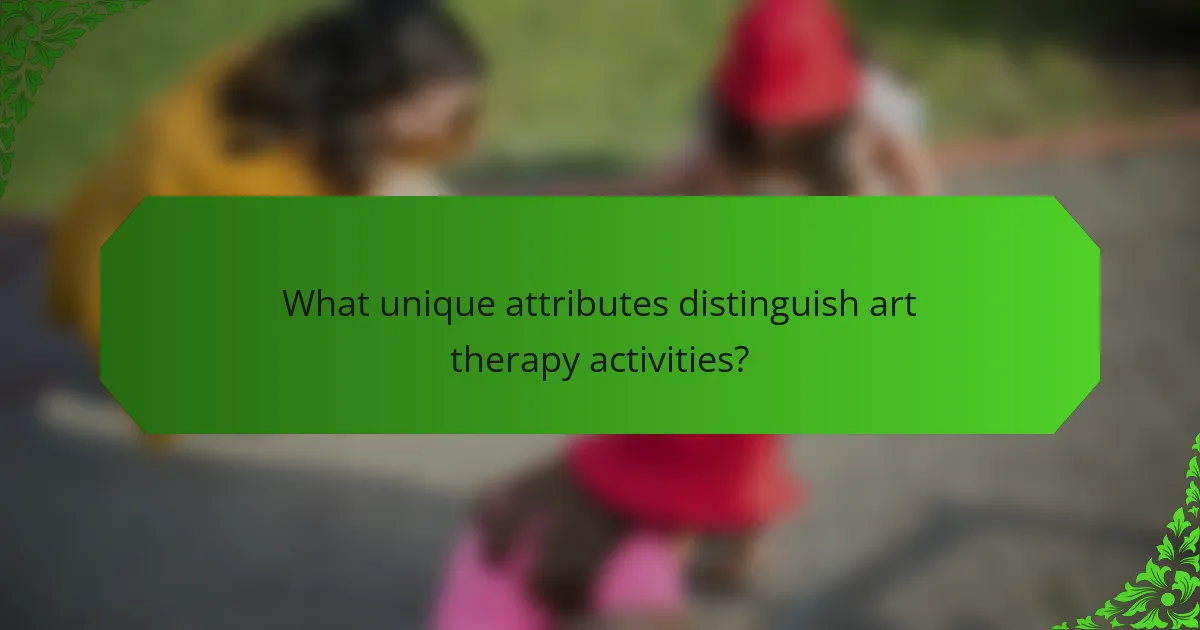
What unique attributes distinguish art therapy activities?
Art therapy activities for children are distinguished by their unique ability to blend creativity with emotional expression. These activities foster resilience by allowing children to explore feelings through various artistic mediums. A unique attribute of art therapy is its focus on process over product, encouraging children to engage without the pressure of achieving a specific outcome. Additionally, art therapy activities often incorporate storytelling, providing a safe space for children to narrate their experiences and emotions. This dual approach enhances emotional processing and strengthens coping mechanisms, making art therapy a powerful tool for emotional resilience.
How does art therapy cater to different age groups?
Art therapy effectively caters to different age groups by adapting activities to their developmental stages. Children benefit from hands-on, playful activities that foster creativity and self-expression. For instance, younger children may engage in finger painting, while older children can explore more complex projects like collage or sculpture, enhancing their emotional resilience. Activities are designed to meet the unique emotional needs of each age group, promoting healing and expression through art.
What specific materials enhance creative expression?
Art therapy activities can be enhanced by specific materials that encourage creative expression. These materials include a variety of art supplies such as colored pencils, watercolors, clay, and collage materials. Each of these enhances emotional resilience by allowing children to explore their feelings and thoughts creatively. For example, clay provides a tactile experience that can be soothing, while watercolors encourage experimentation and spontaneity. Using diverse materials fosters a rich environment for emotional exploration and helps children articulate their emotions visually.
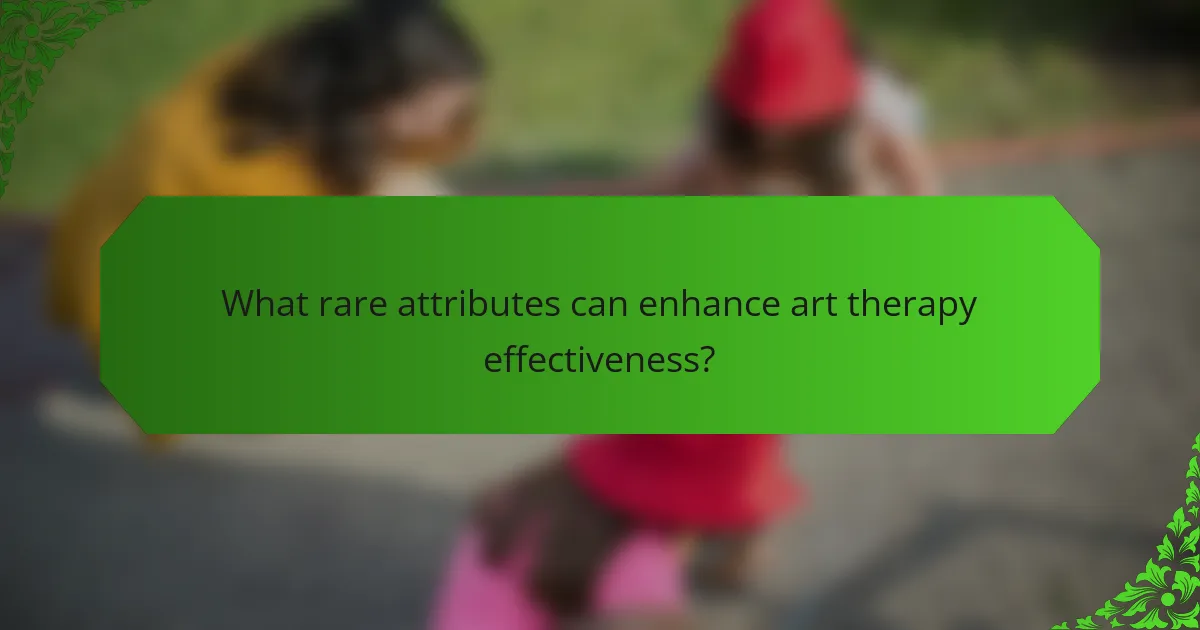
What rare attributes can enhance art therapy effectiveness?
Art therapy effectiveness can be enhanced by incorporating unique attributes such as cultural relevance, personalized themes, and sensory integration. Cultural relevance connects activities to children’s backgrounds, fostering engagement. Personalized themes allow children to express emotions tied to their experiences. Sensory integration incorporates various materials, enhancing creativity and emotional expression. These rare attributes can significantly improve emotional resilience outcomes in children through tailored and meaningful experiences.
How does cultural background influence art therapy outcomes?
Cultural background significantly influences art therapy outcomes by shaping children’s emotional expressions and perceptions. Diverse cultural contexts provide unique frameworks for understanding emotions, impacting engagement and effectiveness of art therapy. For instance, children from collectivist cultures may express emotions through group activities, while those from individualistic cultures might prefer personal expression. This cultural lens fosters resilience by validating diverse emotional experiences, enhancing therapeutic relationships, and promoting culturally relevant interventions. Ultimately, recognizing these cultural nuances allows art therapists to tailor activities that resonate with children’s backgrounds, leading to more meaningful outcomes.
What uncommon themes can emerge in children’s art therapy?
Uncommon themes in children’s art therapy can include the exploration of identity, the representation of fears, and the expression of resilience. These themes often surface as children use art to process complex emotions and experiences. For instance, children may depict their fears through dark colors or chaotic shapes, revealing underlying anxieties. Additionally, themes of identity may emerge as children create self-portraits or symbols that reflect their unique experiences. Resilience can be illustrated through the use of bright colors or uplifting imagery, showcasing their coping mechanisms and strengths. These themes provide valuable insights into a child’s emotional landscape, facilitating deeper therapeutic conversations.
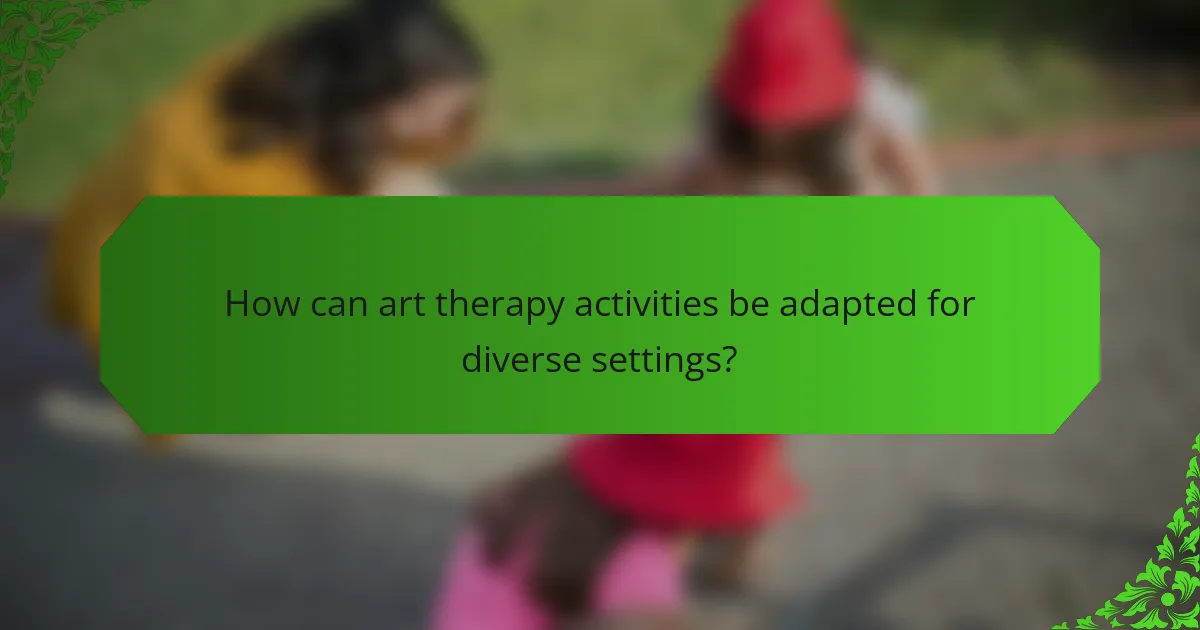
How can art therapy activities be adapted for diverse settings?
Art therapy activities can be adapted for diverse settings by considering the unique needs and resources of each environment. For instance, in schools, group activities can foster collaboration, while at home, individual projects may encourage personal expression.
Community centers can utilize large spaces for collaborative murals, enabling social interaction. Hospitals might focus on portable art supplies for bedside creativity, which can enhance emotional resilience during treatment.
Incorporating local cultural elements into art projects can make activities more relatable and engaging for participants. Additionally, using varied materials based on availability ensures that art therapy remains accessible across different contexts.
What strategies work best in schools?
Art therapy activities effectively foster emotional resilience in children through creative expression. Strategies include guided drawing sessions, storytelling through art, and collaborative mural projects. These activities enhance self-awareness and coping skills, promoting emotional regulation. Research indicates that art therapy can significantly reduce anxiety and improve mood, making it a valuable tool in educational settings.
How can community programs implement art therapy?
Community programs can implement art therapy by integrating structured art activities that enhance emotional resilience in children. These activities can include drawing, painting, and sculpting, all aimed at self-expression and coping skills.
Programs should focus on creating a safe environment where children feel comfortable exploring their emotions through art. Regular sessions can help build consistency and trust, allowing children to engage deeply.
Collaboration with trained art therapists ensures that activities are tailored to address specific emotional needs, fostering a supportive community atmosphere. Additionally, incorporating feedback from participants can refine the program, making it more effective in promoting emotional well-being.
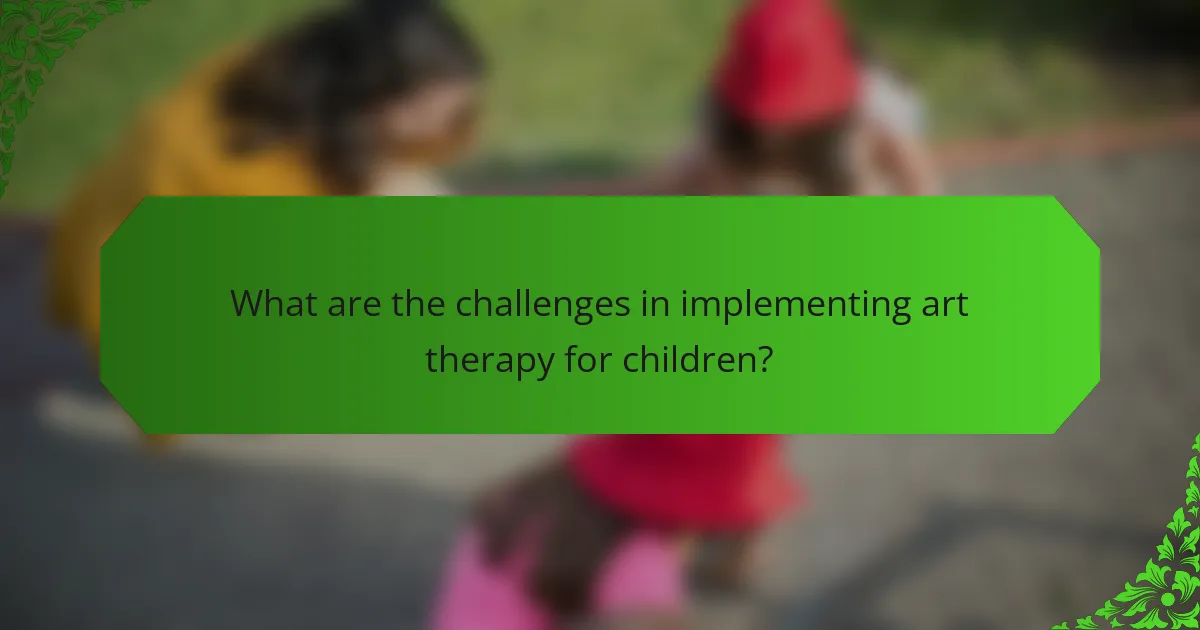
What are the challenges in implementing art therapy for children?
Implementing art therapy for children faces several challenges. Limited access to trained professionals can hinder effective practice. Additionally, varying levels of parental support impact participation. Cultural perceptions of art therapy may also create barriers to acceptance. Finally, securing adequate funding for programs remains a persistent issue.
What limitations should practitioners be aware of?
Practitioners should be aware of limitations such as potential emotional overwhelm in children, varying levels of engagement, and the need for skilled facilitation. Additionally, not all children may respond positively to art therapy activities. Cultural differences can also impact the effectiveness of these interventions. Regular assessment of individual needs and progress is essential for successful outcomes.
How can resistance to art therapy be addressed?
Resistance to art therapy can be addressed through various strategies. Establishing a safe environment encourages children to express themselves. Engaging parents or caregivers fosters support and understanding. Incorporating familiar themes or interests into activities can enhance participation. Gradual exposure to art materials helps reduce anxiety. Providing positive reinforcement builds confidence and motivation. Tailoring activities to individual preferences promotes a sense of ownership and control.
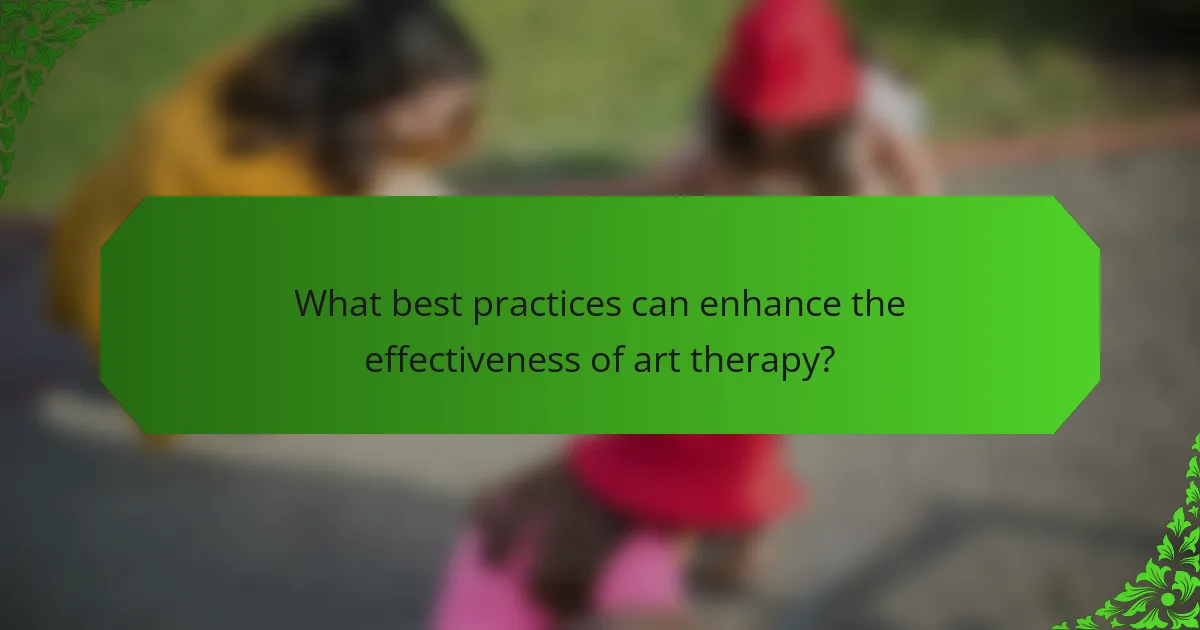
What best practices can enhance the effectiveness of art therapy?
Incorporating specific best practices enhances the effectiveness of art therapy for children. Engaging activities like collaborative art projects foster social skills and emotional expression. Providing a safe environment encourages openness, allowing children to explore their feelings. Regularly integrating feedback from participants helps tailor sessions to their needs, enhancing engagement. Utilizing diverse materials can stimulate creativity and self-discovery, promoting emotional resilience.
How can caregivers support art therapy at home?
Caregivers can support art therapy at home by providing a safe space for creative expression. Encourage children to explore various art materials, such as paints, clay, or crayons. Regularly engage in art activities together to foster emotional connection. Establish a routine that incorporates art sessions, allowing children to express their feelings freely. Consider using prompts or themes to guide their creativity, enhancing emotional resilience through structured exploration.
What common mistakes should be avoided in art therapy sessions?
Avoiding common mistakes in art therapy sessions is crucial for fostering emotional resilience in children. Key errors include neglecting individual needs, failing to create a safe space, and not allowing for self-expression.
Inadequate understanding of art materials can hinder engagement. Therapists should also avoid imposing their interpretations on children’s artwork, as this can stifle creativity. Lastly, overlooking the importance of reflection and discussion can limit the therapeutic benefits of the activities.
What expert insights can guide successful art therapy implementation?
Expert insights for successful art therapy implementation emphasize the importance of tailored activities. Engaging children in creative expression fosters emotional resilience by allowing them to process feelings. Techniques such as guided imagery and collaborative art projects promote social skills and self-awareness. Regular assessment of children’s responses enhances the therapy’s effectiveness and adaptability. Training for facilitators ensures they can support diverse emotional needs, making art therapy a valuable tool for emotional development.
